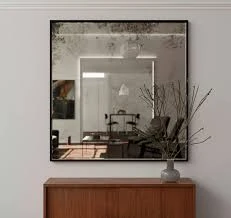

Understanding Frosted Laminated Glass A Versatile Solution for Modern Design
In the realm of architectural design and interior decoration, frosted laminated glass has emerged as a popular choice, combining aesthetics with functionality. This innovative material provides a unique way to enhance privacy while allowing light to pass through, making it an ideal solution for a variety of applications, from residential homes to commercial spaces.
Frosted laminated glass is created by sandwiching a layer of frosted glass between two layers of traditional glass. The frosted glass is achieved through a process that etches the surface or applies a film, resulting in a translucent appearance that diffuses light. The lamination process not only adds to the design elements but also enhances safety and durability, making it less likely to shatter compared to regular glass. This feature is particularly important in settings where safety is a priority, such as in schools, hospitals, and public buildings.
One of the primary benefits of frosted laminated glass is its ability to provide privacy without sacrificing natural light. Unlike traditional opaque materials, frosted glass allows illumination to filter through while obscuring the view from the outside. This makes it an excellent choice for spaces such as bathrooms, offices, and conference rooms where privacy is desired. The soft glow of light that comes through frosted glass can create a serene and inviting atmosphere, promoting relaxation and productivity.

Moreover, frosted laminated glass is highly customizable. It can be manufactured in various thicknesses, sizes, and colors, allowing architects and designers to tailor it to their specific needs. It can also be combined with other design elements, such as wood or metal frames, to create a cohesive look that complements the overall design of a space. Additionally, the ability to incorporate patterns or graphics into the frosted surface can add an artistic touch, making it a versatile option for branding and visual identity in commercial settings.
From a maintenance perspective, frosted laminated glass is relatively easy to clean and maintain. It can be washed using standard glass cleaning solutions, and its smooth surface resists staining, ensuring that it remains attractive over time. This low-maintenance aspect is particularly beneficial for high-traffic areas where aesthetics are crucial.
Another crucial advantage of frosted laminated glass lies in its energy efficiency. The laminated construction can help improve insulation properties, reducing heat transfer and thus making spaces more comfortable year-round. Additionally, by controlling the amount of sunlight entering a room, it can help mitigate glare and reduce reliance on artificial lighting, contributing to energy savings.
In conclusion, frosted laminated glass represents a harmonious fusion of form and function. Its ability to provide privacy while allowing light to permeate makes it an excellent choice for various applications in both residential and commercial environments. The safety, durability, and aesthetic flexibility it offers further cement its position as a preferred material in modern design. As architects and designers continue to seek innovative solutions that balance beauty and practicality, frosted laminated glass is sure to remain a key player in the evolution of architectural materials.